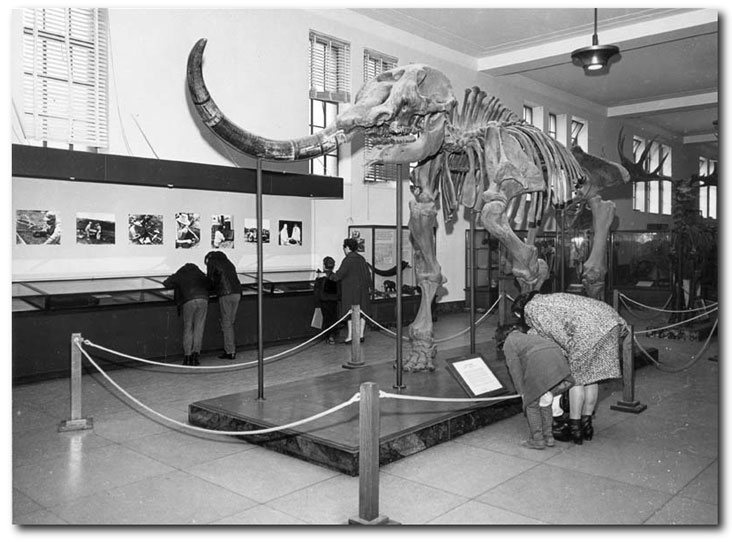This one is for the kids.
Most of you kids know a lot about
dinosaurs. You know about Tyrannosaurus Rex, Stegosaurus and
Triceratops. You not only know how to pronounce their names, but you
know how big they were, what they ate and when they lived. I am a
grandfather, I do not know any of that stuff.
But I do know about Fred.
You know that most dinosaur bones
were found in other places and there is no record of any found in
Ontario. Mastodons are a different story. There have been over one
hundred discoveries of mastodon and mammoth remains in Ontario, most
of these being limited to a tooth or tusk fragment. The really big
find, the one that is now in the Royal Ontario Museum, was found in
Wainfleet. I call this mastodon Fred.
Fred was not a mammoth. That was a
different animal. Fred was a mastodon. You probably know how these
animals were different. I donít. I am a grandfather, remember?
Try to look back about 10,000
years. Picture Fred strolling along the Forks Road, probably eating
daisies. Fred is old; he lies down for a nap in the sun and never
wakes up.
Now jump forward to 1911. Mr. Harry
Smith, a Wainfleet farmer, is digging a new pond and he finds what he
thinks is a large horn. Mr. Smith keeps digging and ends up with a
large collection of bones and teeth. No one knows what these are. On
October 24, 1911, the Welland Telegraph published a front-page
story with the headline "Science has failed to identify
monster bones found on Forks Road farm". Things were
different in 1911 and kids did not have access to
the knowledge they have today. Today, any of you kids could have told
Mr. Smith about mastodons.
Now think about it. If Fred died on
the site of a Forks Road farm, what are the chances that he wandered
all over this area in his lifetime? Did Fred eat daisies on what is
now your front lawn? Did Fred poop on your soccer field? Letís try
to find out what the chances are.
Go get your telephone book. In the
yellow pages section, on pages 6 and 7, there is a Regional map. Find
Welland and also find Port Colborne. Half way between you will find
Dain City. Got it? Good. Now, from Dain City, trace your finger left
along Forks Road towards Chambers Corners. You now have to jump to
page 6 and keep going past Winger. You are looking for Flanagan Road,
which goes south. Got it? Draw a circle around the intersection. This
is about where they found Fred. If you can now find where your house
is on the map, you can see how close you are to that spot. I bet Fred
did poop on your soccer field!
Do you want to see a picture of
Fred? I did, so I contacted Dr. Kevin Seymour of the Department of
Palaeobiology at the Royal Ontario Museum (the ROM) for help. He told
me to go to their website at www.rom.on.ca.
There is a button for "Images" and it leads to another for
"Subjects". Now click on "Dinosaurs". There you
will find 24 pictures and Fred is number 22. Yes, I know that Fred was
not a dinosaur and so does Dr. Seymour, but he did not design the
website.
The ROM website also says Fred was
discovered in 1912, but we know it was 1911. Maybe they will fix this
but hey, in the Palaeobiology business if you get within five thousand
years, itís close enough.
Fred is unique in that he
apparently only had one tusk. Some articles speculate that the other
tusk was lost in a fight, but the ROM study of the bones indicates
that Fred had a birth defect that resulted
in being born with only one. Now, if you see pictures of a mastodon
with two tusks, you know that it is not our Fred. Our Fred was
special.
You can find out more about Fred at
the Wainfleet library. They have a reference book, (you cannot take it
out) called "Chronicles of Wainfleet Township" and it has an
article about the find. You can also look at copies of the 1911
Welland Telegraph at the Welland Library.
You might want to write your own
story about Fred. Did the other mastodons laugh and call him names
because he only had one tusk? Did he have brothers and sisters? Did he
have friends? Use your imagination. Maybe your class could do a
project.
And, when you play soccer, be
careful where you step.

![]()